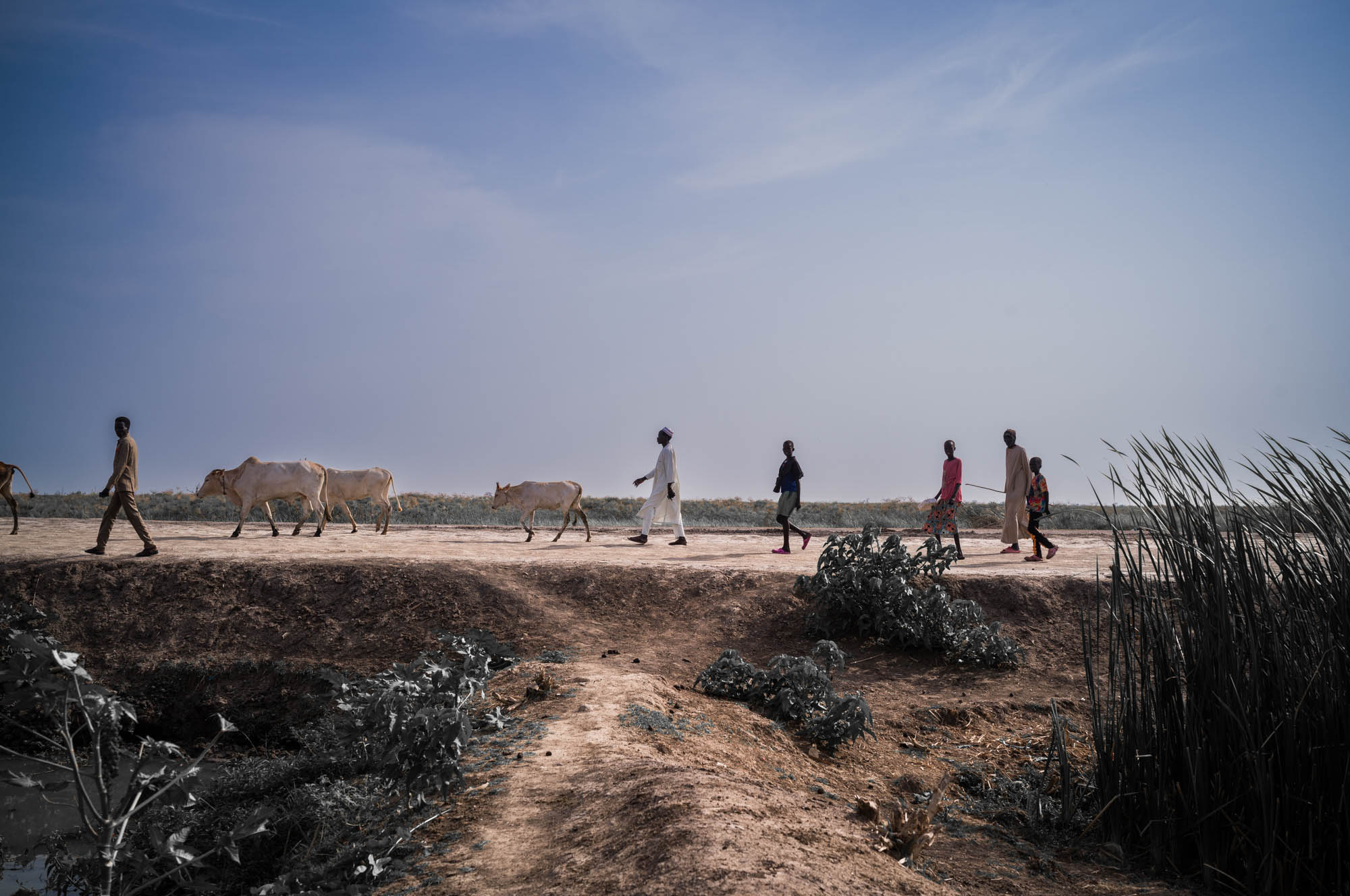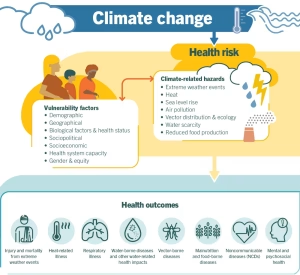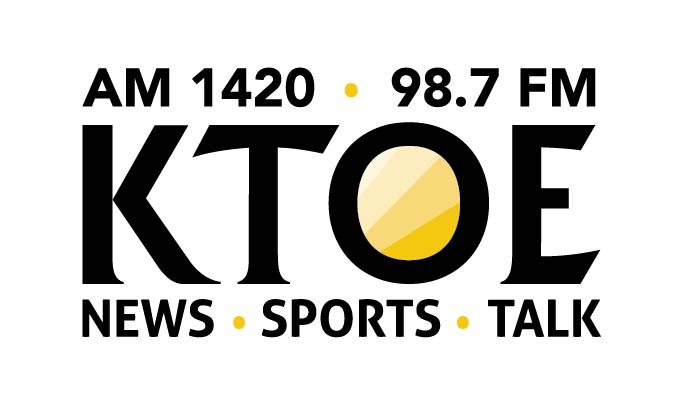Climate Change Drives Internal Displacement in Iraq – THE INTERNATIONAL AFFAIRS REVIEW

Report on Climate-Induced Displacement and Sustainable Development in Iraq
Executive Summary
Iraq is confronting a severe crisis rooted in environmental degradation, ranking as the world’s fifth most vulnerable country to climate change impacts such as water and food scarcity. This has triggered mass internal displacement, placing significant strain on host regions, particularly the Kurdistan Region of Iraq (KR-I). Addressing this multifaceted challenge requires a concerted international effort aligned with the Sustainable Development Goals (SDGs). This report outlines the scale of the crisis, its direct impact on key SDGs, and recommends a framework for action centered on international partnerships, localized solutions, and climate resilience to advance SDG 13 (Climate Action), SDG 6 (Clean Water and Sanitation), and SDG 2 (Zero Hunger).
Climate-Induced Displacement and its Impact on Sustainable Development
Environmental Vulnerabilities and SDG 13
Iraq’s geography, with 40% desert and 30% mountainous regions, is highly susceptible to the effects of climate change. The nation is experiencing aggravated desertification, declining rainfall, and increased flooding, which directly undermines progress on SDG 13 (Climate Action). The UN Global Environment Outlook-6 report identifies Iraq’s extreme vulnerability, necessitating urgent adaptation and mitigation strategies. The migration from central and southern Iraq is a direct consequence of this environmental decline, as agricultural livelihoods become untenable.
Mass Internal Migration and Pressure on Host Communities
The environmental crisis has resulted in over one million Internally Displaced Peoples (IDPs), with a significant number relocating to the KR-I. This influx challenges the region’s capacity to provide essential services, impacting SDG 11 (Sustainable Cities and Communities) and SDG 10 (Reduced Inequalities). In May 2024, Kurdistan’s Prime Minister, Masrour Barzani, highlighted the urgent need for immediate and long-term strategies to manage climate-induced migration, calling for collaborative action from local, national, and international bodies.
Addressing Key SDG Challenges
Water and Food Scarcity: A Threat to SDG 2 and SDG 6
Climate change has severely impacted Iraq’s agricultural sector, a critical source of income for many communities. This directly threatens the achievement of SDG 2 (Zero Hunger) and SDG 15 (Life on Land).
- An International Organization for Migration (IOM) survey revealed that in areas where agriculture, livestock, and fishing were the main income sources, over half were abandoned due to environmental degradation.
- The Norwegian Refugee Council reported that farmers in Nineveh were forced to reduce cultivation or water usage during the 2023 farming season, further straining food production.
- These challenges are intrinsically linked to water scarcity, a critical issue for SDG 6 (Clean Water and Sanitation).
Financial Strain and the Need for Global Partnerships (SDG 17)
The government of the Kurdistan region currently funds approximately 80% of the services provided to IDPs and refugees. This financial burden is unsustainable without robust international support. The dwindling of international donations necessitates a renewed commitment from the global community, aligning with SDG 17 (Partnerships for the Goals), to ensure that host communities can adequately support displaced populations and invest in long-term sustainable solutions.
Strategic Interventions and Alignment with the 2030 Agenda
Past and Present International Support
International aid has played a role in building climate resilience. Prior to the discontinuation of its operations, the United States Agency for International Development (USAID) made significant contributions:
- SDG 6: Invested in water management systems, increasing access to potable water for over 12 million Iraqis and training local staff.
- SDG 8 (Decent Work and Economic Growth): Provided $1.7 million to Small and Medium Enterprises (SMEs) in green energy and climate-related sectors.
- SDG 4 (Quality Education): Supported awareness campaigns on desertification in local schools and through media platforms, reaching over half a million people.
Following the cessation of USAID projects, including a $20 million water and sanitation initiative, other partners have stepped in. The Italian Agency for Development Cooperation (AICS) is supporting the World Food Program to promote climate-smart farming and irrigation, reinforcing efforts towards SDG 2 and SDG 13.
The Localization Strategy: Empowering Communities for Resilience
A sustainable response requires empowering local communities to lead crisis management efforts. This “localization” approach ensures that solutions are contextually appropriate and build long-term resilience, contributing to SDG 1 (No Poverty) and SDG 11. By channeling funds to climate-affected communities, international partners can help cultivate local involvement in designing and implementing early warning systems and response mechanisms.
Enhancing Early Warning Systems and Green Reintegration
Proactive measures are crucial for mitigating the impact of climate-related disasters. Key strategies include:
- Strengthening Early Warning Systems: Integrated systems for hazard monitoring, forecasting, and risk communication are essential for preparedness and align with the goals of SDG 13. The United Nations Environment Program has conducted workshops with the Iraqi government on this topic.
- Promoting “Green Reintegration”: An IOM-led initiative offers training and employment in sustainable sectors for individuals returning to their places of origin. This supports livelihoods and environmental restoration, contributing to SDG 8 and SDG 15.
Recommendations for Future Action
To effectively address climate-driven displacement in Iraq and align with the Sustainable Development Goals, the international community should prioritize the following actions:
- Increase Financial and Technical Support: Scale up foreign aid to support localized climate adaptation strategies, directly contributing to SDG 17.
- Invest in Water and Agricultural Resilience: Fund projects focused on climate-smart agriculture, efficient water management, and irrigation to secure progress on SDG 2 and SDG 6.
- Support Green Economic Growth: Provide continued funding for SMEs in the green energy and sustainable technology sectors to create resilient livelihoods, in line with SDG 8.
- Implement Localized Early Warning Systems: Empower local communities to manage and operate early warning systems to minimize disaster impact, advancing SDG 11 and SDG 13.
- Strengthen Advocacy and Public Awareness: Support public information campaigns led by political leaders and international organizations to ensure collective action and shared responsibility for climate change response, reinforcing SDG 4 and SDG 13.
Analysis of Sustainable Development Goals in the Article
1. Which SDGs are addressed or connected to the issues highlighted in the article?
-
SDG 2: Zero Hunger
The article addresses SDG 2 by highlighting Iraq’s vulnerability to “food scarcity.” It notes that many internally displaced peoples (IDPs) were “forced to abandon their agricultural livelihoods” due to environmental degradation. The solutions discussed, such as promoting “climate-smart farming techniques” and providing “financial support to help farmers,” directly aim to achieve food security and promote sustainable agriculture.
-
SDG 6: Clean Water and Sanitation
This goal is central to the article. Iraq is identified as one of the most vulnerable countries to “water scarcity.” The text details past USAID projects that invested in “water management, increasing access to potable water for over 12 million Iraqis” and a discontinued “$20m four year water and sanitation improvement project.” The focus on “irrigation improvements” and training in “water system management” further connects the article’s content to ensuring the availability and sustainable management of water.
-
SDG 8: Decent Work and Economic Growth
The article connects environmental degradation to economic decline, noting that in many areas, the “main source of income was agriculture, livestock, and fishing” which were abandoned. To counter this, it highlights support for economic growth through investments of “$1.7 million to small and medium enterprises (SMEs) working in green energy and climate-related sectors” and providing “training and employment in sustainable environmental sectors” through “Green reintegration” programs.
-
SDG 10: Reduced Inequalities
The article focuses on the plight of vulnerable populations, specifically the “over 1 million internally displaced peoples (IDPs)” and refugees who have relocated to the Kurdistan region. It discusses the immense pressure this places on the region, which “pays for 80 percent of these services to this population,” and calls for support for these “climate-affected communities,” thereby addressing the inequality faced by displaced groups.
-
SDG 13: Climate Action
This is the primary SDG discussed. The entire article revolves around Iraq’s vulnerability to climate change, evidenced by “extreme weather,” “declining average rainfall,” and “desertification.” It calls for urgent action to “address the risks posed by climate change, adapt to its consequences, and prevent disasters.” Proposed solutions like strengthening “early warning systems,” conducting “awareness campaigns,” and implementing “climate change adaptation measures” are all core components of climate action.
-
SDG 15: Life on Land
The article directly addresses SDG 15 by discussing “environmental degradation” and “desertification,” which it states has been aggravated by climate change and affects 40 percent of Iraq’s geography. The mention of proposed solutions like “afforestation and revegetation initiatives” is a direct effort to combat desertification and restore degraded land.
-
SDG 16: Peace, Justice and Strong Institutions
The article touches on SDG 16 by highlighting the challenge of managing a “mass migration” of over 1 million IDPs, which strains governmental and civil society institutions. The call by the Prime Minister of the Kurdistan region for the central Iraqi government and the international community to “act quickly and aggressively” underscores the need for effective and accountable institutions to manage the crisis and support displaced populations.
-
SDG 17: Partnerships for the Goals
The article is a strong call for international partnerships. It repeatedly emphasizes the need for “Foreign aid” and for the “international community to rally to provide support.” It details the past and present roles of various international actors, including “USAID,” the “IOM,” the “United Nations Environment Program,” the “World Food Program,” and the “Italian Agency for Development Cooperation (AICS),” showcasing the necessity of global cooperation to tackle the climate crisis in Iraq.
2. What specific targets under those SDGs can be identified based on the article’s content?
-
Target 2.4:
By 2030, ensure sustainable food production systems and implement resilient agricultural practices. This is identified through the article’s mention of promoting “climate-smart farming techniques” and supporting farmers to “adapt to climate change” to counter the abandonment of agricultural livelihoods.
-
Target 6.1:
By 2030, achieve universal and equitable access to safe and affordable drinking water for all. This is directly referenced in the description of a USAID project that aimed at “increasing access to potable water for over 12 million Iraqis” and a separate project intended to “reach 2.5 million people.”
-
Target 6.4:
By 2030, substantially increase water-use efficiency across all sectors. This is implied through the mention of “water management training” and “irrigation improvements” as key strategies to combat water scarcity.
-
Target 8.3:
Promote development-oriented policies that support productive activities, decent job creation, entrepreneurship, creativity and innovation, and encourage the formalization and growth of micro-, small- and medium-sized enterprises. This is directly addressed by the USAID funding of “$1.7 million to small and medium enterprises (SMEs) working in green energy and climate-related sectors.”
-
Target 13.1:
Strengthen resilience and adaptive capacity to climate-related hazards and natural disasters in all countries. The article’s core message aligns with this target, calling for “immediate and long-term strategies to… adapt to its consequences, and prevent disasters,” and advocating for “early warning systems” and “response mechanisms.”
-
Target 13.3:
Improve education, awareness-raising and human and institutional capacity on climate change mitigation, adaptation, impact reduction and early warning. This is explicitly mentioned through USAID’s “desertification awareness campaign” in local schools and the “Female Journalists for Climate media platform” which disseminated content to half a million people.
-
Target 15.3:
By 2030, combat desertification, restore degraded land and soil, including land affected by desertification, drought and floods, and strive to achieve a land degradation-neutral world. The article directly discusses the problem of “desertification” and mentions “afforestation and revegetation initiatives” as a solution.
-
Target 17.2:
Developed countries to implement fully their official development assistance (ODA) commitments. The article’s plea for scaled-up “Foreign aid,” its critique of discontinued USAID projects (like the “$20m” water project), and its praise for donations from other countries like Italy directly relate to the need for international financial support.
3. Are there any indicators mentioned or implied in the article that can be used to measure progress towards the identified targets?
-
Indicator for Target 6.1:
The article provides specific numbers that can be used as indicators of progress. The USAID project aimed to increase access to potable water for “over 12 million Iraqis,” and another project was set to reach “2.5 million people.” These numbers serve as direct measures of the population benefiting from improved water services.
-
Indicator for Target 8.3:
The amount of financial support provided to SMEs is a clear indicator. The article specifies that USAID provided “$1.7 million to small and medium enterprises (SMEs),” which measures the financial resources directed towards fostering green entrepreneurship.
-
Indicator for Target 13.1:
The existence and implementation of disaster management plans serve as an indicator. The call to develop “immediate and long-term strategies” and implement “early warning systems” implies that the creation and adoption of such national and local plans would be a key measure of progress.
-
Indicator for Target 13.3:
The article provides quantifiable data for awareness campaigns. The participation of “five local schools” in a campaign and the media platform reaching “half a million people” are specific metrics that can be used to measure the reach and impact of climate change education and communication efforts.
-
Indicator for Target 15.3:
The proportion of land that is degraded is a key indicator. The article states that “Desert regions make up 40 percent of Iraq’s geography” and that desertification has been “aggravated,” implying that tracking this percentage over time would measure progress in combating land degradation.
-
Indicator for Target 17.2:
The amount of Official Development Assistance (ODA) is a direct indicator. The article mentions specific financial figures, such as a “$20m four year water and sanitation improvement project” and USAID’s “$1.7 million” to SMEs. These figures represent the volume of financial flows from international partners.
4. Summary Table of SDGs, Targets, and Indicators
| SDGs | Targets | Indicators Identified in the Article |
|---|---|---|
| SDG 2: Zero Hunger | 2.4: Ensure sustainable food production systems and resilient agricultural practices. | Adoption of “climate-smart farming techniques” to reverse the trend of abandoned agricultural livelihoods. |
| SDG 6: Clean Water and Sanitation | 6.1: Achieve universal access to safe drinking water. 6.4: Increase water-use efficiency. |
Number of people with increased access to potable water (e.g., “over 12 million Iraqis”). Implementation of “water management training” and “irrigation improvements.” |
| SDG 8: Decent Work and Economic Growth | 8.3: Promote policies to support small- and medium-sized enterprises (SMEs). | Financial investment in SMEs (e.g., “$1.7 million to small and medium enterprises”). |
| SDG 10: Reduced Inequalities | Focus on supporting vulnerable populations like IDPs and refugees. | Number of internally displaced peoples (IDPs) supported (“over 1 million”). Level of financial capacity of local governments to provide services. |
| SDG 13: Climate Action | 13.1: Strengthen resilience and adaptive capacity. 13.3: Improve education and awareness-raising. |
Development of “early warning systems.” Number of people reached by awareness campaigns (“half a million people”). Number of schools participating in campaigns (“five local schools”). |
| SDG 15: Life on Land | 15.3: Combat desertification and restore degraded land. | Proportion of land affected by desertification (“40 percent of Iraq’s geography”). Implementation of “afforestation and revegetation initiatives.” |
| SDG 17: Partnerships for the Goals | 17.2: Developed countries to implement ODA commitments. | Volume of foreign aid and development assistance (e.g., a “$20m” project, donations from AICS). |
Source: iar-gwu.org

What is Your Reaction?
 Like
0
Like
0
 Dislike
0
Dislike
0
 Love
0
Love
0
 Funny
0
Funny
0
 Angry
0
Angry
0
 Sad
0
Sad
0
 Wow
0
Wow
0














































.jpg.webp?itok=0ZsAnae9#)







:focal(1500,1000)/https://media.globalcitizen.org/a6/9a/a69a4720-d8a1-4715-b596-18738d03c05c/rotary_polio_hero_image.jpg?#)

/countries/sri-lanka/photo-credit---dmc-sri-lanka.tmb-1200v.jpg?sfvrsn=dc298bcc_1#)



















